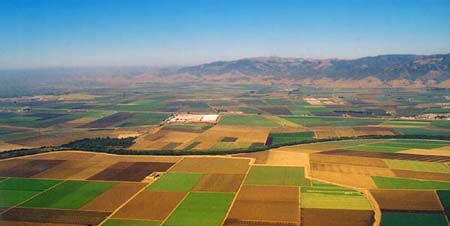About Us

PROFILE. . .
Monterey County
The County covers 3,324 square miles, comprising some of the most scenic vistas in the world. Situated in the central coast region of California, its 100 miles of coastline fall within the Monterey Bay National Marine Sanctuary, currently the nation’s largest.
In 2004, the population was 420,000, with the ethnic distribution being: White 37%, Hispanic 51%, Asian 6%, and other 6%.
The County’s rich natural beauty and resources reflect diversity as well, from the rugged Big Sur Coast and pristine National forests, to the rolling oak-studded hills. Monterey proudly showcases its historical roots as an early capital of California. Upscale Carmel and Pebble Beach offer trendy shops and gourmet restaurants. A short way north along the coast, Moss Landing sits in striking contrast, with its many antique stores, down home restaurants, and authentic fisherman character. All along the 101 corridor, houses sprout to accommodate the growing population. Land use, water quality and availability, and affordable housing are hotly contested issues that policy makers and the public are grappling with. Assuring the preservation of resources, the prospering of agriculture, and decent accommodations for our population are at the heart of County and city politics.
Monterey County is recognized as the Salad Bowl of the World. Its temperate climate, rich soils, and unparalleled infrastructure support system make this the ideal growing area for cool season vegetables, wine grapes, strawberries and flowers. The County is also the home of the packaged salad and pre-cut fresh vegetables, representing 90% market share of the fresh vegetable value added industry. Because the agriculture here is year round and highly labor intensive, Monterey County has the State’s highest agricultural payroll at $408.6 million, comprising 9.5% of the State of California’s $4.3 billion agricultural payroll.
Monterey County is the State’s third largest agricultural producer. The 2004 F.O.B. value of Monterey County agriculture was $3,392,309,318. Over 41 individual commodities each gross over one million dollars, from #1 leaf lettuce at $544 million, to #41 herbs at $1.4 million.
Although known as the Salad Bowl of the World, Monterey County produces many commodities other than the $2.5 billion in vegetable crops. The following statistics show just how diverse agriculture is: Fruits and Nuts $529 million; Field Crops $15.5 million; Nursery Crops $271 million; Livestock and Poultry $39 million; Seed Crops $7 million.
This intensive agricultural backdrop makes Monterey County a destination for farmers and scientists the world over to observe cutting its edge practices.
Cooperative Extension has been a part of this scene since 1918. Today the industry is served by Cooperative Extension advisors specializing in entomology, plant pathology, irrigation and water resources, weed management and vegetable crops, and viticulture. The 4-H Youth Development program stresses citizenship, leadership, and life skills for its 800+ members.
UNIVERSITY OF CALIFORNIA - DIVISION OF AGRICULTURE & NATURAL RESOURCES - JUNE, 2005
Cooperative Extension-Monterey County
1432 Abbott Street
Salinas, CA 93901
Phone: (831) 759-7350 4-H-(831) 759-7360
Fax: (831) 758-3018
